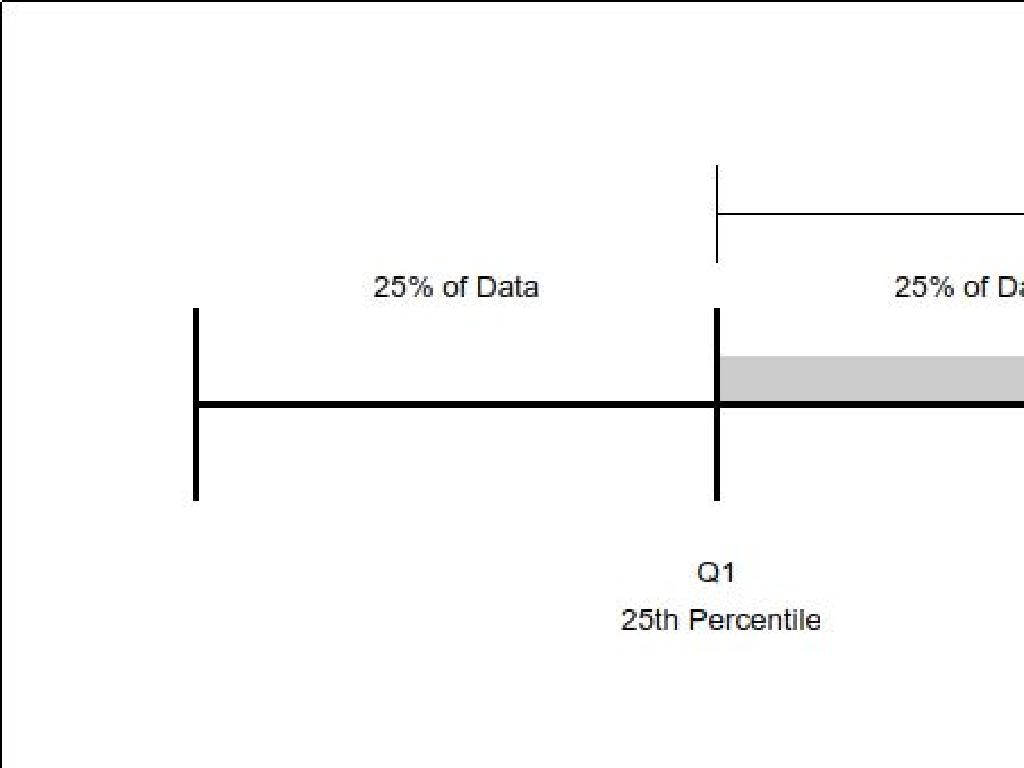Early Chinese Thought
Subject: Social studies
Grade: Seventh grade
Topic: Early China
Please LOG IN to download the presentation. Access is available to registered users only.
View More Content
Exploring Early Chinese Thought
– Introduction to Early China
– A glimpse into ancient Chinese civilization.
– Timeline: Dynasties to Philosophies
– Shang, Zhou, Qin, Han dynasties and Confucianism, Daoism, Legalism.
– Focus on Early Chinese Thought
– Delve into Confucius, Laozi, and Han Feizi’s teachings.
– Significance in history
|
This slide introduces students to the rich tapestry of Early China, setting the stage for a deeper dive into its philosophical traditions. Begin with a broad overview of ancient Chinese civilization, touching on its origins and the emergence of its first dynasties. Highlight the timeline of major dynasties and the corresponding development of key philosophical thoughts that have shaped Chinese culture. Focus on the core tenets of Early Chinese Thought, including Confucianism, Daoism, and Legalism, and their lasting impact on Chinese society and beyond. Encourage students to consider how these philosophies addressed social and political issues of the time and how they continue to influence modern thinking.
The Zhou Dynasty: Foundation of Culture
– Understanding the Mandate of Heaven
– Divine right to rule, granted by the heavens
– The Feudal System’s role
– A hierarchical system shaping social structure
– Impact on society and culture
– Led to social stability and later unrest
– Prelude to philosophical growth
– Set conditions for Confucianism and Daoism
|
The Zhou Dynasty was pivotal in shaping early Chinese thought. Introduce the Mandate of Heaven as a crucial political and religious doctrine that justified the rule of the king. Explain how the Feudal System, similar to medieval Europe’s, organized society into a hierarchy, which initially brought stability but eventually led to fragmentation and conflict. Highlight how these conditions fostered a rich cultural and philosophical environment, setting the stage for the emergence of significant schools of thought like Confucianism and Daoism. Encourage students to consider how the ideas from this era continue to influence Chinese culture and philosophy today.
Exploring Confucianism in Early China
– Who was Confucius?
– A Chinese teacher, editor, politician, and philosopher of the Spring and Autumn period of Chinese history.
– Key principles of Confucianism
– Values like respect, hard work, and loyalty.
– Confucianism’s societal role
– Guided social relationships and moral thoughts.
– Its influence on government
– Shaped leadership and civil service exams.
|
This slide introduces students to Confucianism, a philosophical and ethical system based on the teachings of Confucius. Confucius was a significant figure whose ideas influenced Chinese culture deeply. His teachings emphasized personal and governmental morality, correctness of social relationships, justice, and sincerity. These principles were not only the foundation of personal character but also the basis of a harmonious society and fair government. Confucianism played a crucial role in shaping the structure of society, influencing the family unit, social conduct, and even the government, where it was used to guide the selection of officials through civil service examinations. Encourage students to think about how these principles might apply in their own lives and in modern society.
Exploring Daoism in Early Chinese Thought
– Understanding the Dao
– The Dao, or ‘The Way’, is a central concept in Daoism representing the natural order of the universe.
– Laozi and the Dao De Jing
– Laozi, an ancient Chinese philosopher, wrote the Dao De Jing, a key Daoist text emphasizing living in harmony with the Dao.
– Daoism vs. Confucianism
– While Confucianism focuses on social order and morality, Daoism emphasizes living in harmony with nature and the universe.
– Daoism’s role in society
|
This slide introduces students to Daoism, one of the major philosophical traditions of Early China. Begin by explaining the Dao, which is often described as the path or way of the universe that is followed for a harmonious life. Introduce Laozi, traditionally considered the founder of Daoism and the author of the Dao De Jing, which offers wisdom on following the Dao. Discuss how Daoism’s focus on natural harmony contrasts with Confucianism’s emphasis on social order and ethics. Highlight how both philosophies have shaped Chinese culture and thought. Encourage students to think about how the ideas of balance and harmony can apply to their own lives.
Legalism in Early Chinese Thought
– Legalism: Philosophy of order
– Emphasizes strict laws and governance
– Key figures: Shang Yang & Han Feizi
– Advocated for clear rules and harsh punishments
– Legalism’s role in Qin Dynasty
– Legalism became state philosophy under Qin
– Strict laws to control society
– Aimed to achieve order and discourage rebellion
|
Legalism is a philosophy that played a crucial role in Chinese history, particularly during the Qin Dynasty. It focuses on the importance of law and order to govern a state effectively. Key proponents of Legalism, Shang Yang and Han Feizi, believed that a strong, authoritarian government was necessary for social stability. Under the Qin Dynasty, Legalism became the state philosophy, leading to the creation of a centralized state with a strict legal code. This code was designed to control all aspects of society and to prevent any form of dissent or rebellion. In this slide, students will learn about the fundamental principles of Legalism, its influential figures, and its significant impact on the governance of early China.
Comparing Ancient Chinese Philosophies
– Explore similarities & differences
– Philosophies on human nature
– Confucianism sees people as good, Daoism as part of nature, Legalism as needing strict rules
– Impact on culture & politics
– Traditions, values, and laws were shaped by these philosophies
– Confucianism, Daoism, Legalism
– Understand key tenets of each philosophy
|
This slide aims to compare the three main Chinese philosophies: Confucianism, Daoism, and Legalism. Students should understand that while these philosophies have their own unique perspectives, they also share common ground in shaping Chinese thought. Confucianism generally views human nature as inherently good, Daoism emphasizes living in harmony with the Tao or the natural order, and Legalism believes in strict laws and enforcement to maintain social order. These philosophies have deeply influenced Chinese culture and politics, from family values and social conduct to governance and legal systems. Encourage students to think critically about how each philosophy would respond to contemporary issues.
Philosophy in Action: Confucianism vs. Legalism vs. Daoism
– Case studies of philosophical decisions
– Confucian vs. Legalist rulers
– Confucian rulers focus on morality, ethics, and benevolence; Legalist rulers emphasize strict laws and punishments.
– Daoism’s nature and order
– Daoism values harmony with nature and the universe, seeking balance rather than strict order.
– Impact on governance and society
|
This slide explores how different Chinese philosophies would influence rulers’ decisions and the governance of their states. Confucianism, with its emphasis on moral virtues and social harmony, would lead to a government focused on education, ethics, and the well-being of the people. In contrast, Legalism, which prioritizes order through strict laws and harsh punishments, would result in a more authoritarian regime. Daoism, with its principles of balance and natural order, would encourage a ruler to adopt a more passive governance style, allowing things to take their natural course. Students can discuss how these philosophies might apply to modern leadership and decision-making. Encourage them to think critically about the benefits and drawbacks of each approach.
Class Activity: Philosophical Debate
– Divide into Confucianists, Daoists, Legalists
– Present your group’s governance philosophy
– Share key principles and societal roles
– Debate on relevance in today’s society
– Use historical & modern examples in discussion
– Reflect on the strengths of each philosophy
– Consider ethics, harmony, and order in governance
|
This activity is designed to engage students with the practical applications of ancient Chinese philosophies. By dividing the class into groups representing Confucianism, Daoism, and Legalism, students will explore different approaches to governance. Each group should research their assigned philosophy and prepare to present its main ideas, focusing on how it would shape society’s rules and behaviors. During the debate, encourage students to discuss which philosophy might be most effective in modern times, considering current societal challenges. After the debate, lead a reflection on what can be learned from each philosophy and how these ancient ideas can still have relevance today. Possible activities include role-playing as historical figures, creating posters that represent each philosophy, or writing a short essay on which philosophy they believe is best suited for today’s society.
Reflection on Early Chinese Thought
– Review today’s learnings
– Ancient philosophies in today’s world
– How teachings of Confucius or Taoism apply now
– Open floor for discussion
– Encourage questions and thoughts
– Share your ideas or ask about anything unclear
|
This slide is meant to facilitate a reflective discussion on the day’s lesson about Early Chinese thought. Start by summarizing the key points covered in the lesson, such as the main ideas of Confucianism, Taoism, and Legalism. Encourage students to think critically about how these ancient philosophies might influence our modern lives, for example, the emphasis on harmony in society and respect for family and authority. Open the floor for students to ask questions, share their thoughts, or draw parallels between ancient Chinese philosophies and contemporary issues. This is an opportunity for students to engage with the material on a deeper level and to practice their critical thinking and communication skills.
Homework: Reflecting on Chinese Philosophies
– Choose an ancient Chinese philosophy
– Write a one-page reflection
– Explain why you feel connected to this philosophy
– Include modern examples
– How do these ideas appear in today’s world?
– Share your thoughts next class
|
This assignment encourages students to engage with ancient Chinese philosophies on a personal level. They should reflect on the teachings of Confucianism, Daoism, or Legalism and articulate which philosophy resonates with them the most. Students should provide examples of how the chosen philosophy is reflected in current societal norms or events, helping them to see the relevance of ancient thought in the modern world. In the next class, students will have the opportunity to share their reflections, fostering a discussion that will deepen their understanding of these philosophies and their impact on contemporary life.





